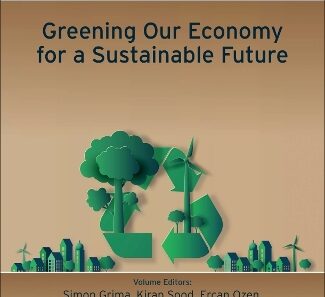When engaging in discussions about climate change and its advocates, one can’t help but ponder: Did Al Gore profit from global warming? This query often arises in conversations surrounding the polarizing figure of the former Vice President of the United States. While some regard him as a stalwart champion for the environment, others scrutinize his motives and question the authenticity of his activism. Such inquiries shed light on broader issues concerning the intersection of environmental advocacy and personal gain.
Al Gore’s foray into environmentalism began in earnest with his book, “Earth in the Balance,” which called for a comprehensive reassessment of humanity’s relationship with nature. He later gained widespread recognition through the documentary “An Inconvenient Truth,” which meticulously illustrated the potential catastrophic fallouts of climate change. His advocacy efforts propelled him into the global spotlight, igniting conversations that extended far beyond scientific circles.
However, as Gore’s profile elevated, so too did the skepticism surrounding his environmental crusade. Critics pointed out his increasing wealth and influence, equating his financial successes with opportunistic motives in the climate change debate. This skepticism raises an intriguing challenge: does advocating for the environment invariably equate to opportunism? Is it possible for someone to profit while simultaneously striving to save the planet?
To dissect this conundrum, it’s essential to consider the implications of market dynamics in environmental advocacy. After “An Inconvenient Truth” enjoyed unparalleled success, Al Gore founded Generation Investment Management, a firm dedicated to sustainable investment. The company, premised on the idea that environmental sustainability aligns with financial profitability, received both acclaim and critique. Critics contend that he’s leveraging the climate crisis for monetary gain, while supporters argue that the firm models a necessary convergence of environmental ethics and commerce.
Understanding the sustainable investment landscape reveals a nuanced perspective. As global awareness of climate issues rises, so too does the potential for financial growth in green technologies and practices. Gore’s transition into the business realm embodies a paradigm shift occurring worldwide, where the market begins to accommodate eco-centric innovations that were once deemed radical or unviable. Critics decry this as transactional environmentalism, yet it challenges the perception of profit and altruism as being mutually exclusive.
Further complicating the narrative is Gore’s extensive speaking engagement itinerary. He commands significant fees, drawing attention to the financial aspects of environmentalism. Critics argue that this commodification of climate advocacy dilutes the urgency of the message; however, one must consider the broader economic implications of climate awareness. High-profile advocates like Gore invariably draw interest, leading to increased visibility for critical issues. In this sense, engaging effectively as a speaker can bolster public discourse on climate change, making it a valid form of activism.
Interestingly, the concept of profit in the context of climate advocacy extends beyond individual figures like Gore. Many organizations and companies have emerged, harnessing the rising tide of environmental concern as a profitable venture. Some may view this trend with skepticism, interpreting it as an opportunistic move rather than a genuine commitment to sustainability. Yet, this perspective overlooks a fundamental shift: that profit, when aligned with environmental goals, can catalyze substantial change. This evolution in thinking raises the important question: can profit serve as a motivating force for wider environmental initiatives?
Moreover, the discussion around Gore’s potential profit intertwines with the broader implications of unregulated industrial practices. As environmental degradation and climate emergencies become increasingly apparent, the necessity for strong advocacy amplifies. If influential figures can profit from raising awareness about these critical issues, does it not also reflect a growing market for sustainable solutions? The financial success of such endeavors can, after all, facilitate further advocacy and innovation.
To examine whether Gore truly profited in the negative connotation associated with “profiting from global warming,” we should also consider his contributions to policy and public discourse. His efforts have arguably reshaped national and international dialogues on climate action, catalyzing initiatives that may not have gained traction without his involvement. Here, the line between profit and purpose blurs, raising pertinent inquiries about the motivations behind significant advocacy.
However, acknowledgment of these complexities does not absolve critics of their scrutiny. The reality remains that climate change remains a pressing global issue, and questions surrounding the authenticity of environmental advocates persist. As funding streams increase for programs tied to climate advocacy, the challenge becomes defining what constitutes a sincere commitment versus a profit-driven enterprise.
In conclusion, the interrogative sentiment surrounding Al Gore’s profit from global warming presents a microcosm of a greater societal struggle. It punctuates the intersection of environmental advocacy with commercial interests. While some may deem his financial success as problematic, it also highlights a transformative narrative—one where profit can indeed align with purpose. As society grapples with climate change’s daunting reality, the efficacy of advocates like Gore may lie not in their financial ascension but in their ability to incite meaningful change. Ultimately, the exploration of this topic reveals the intricate relationships between profit, passion, and the pursuit of a sustainable future.








